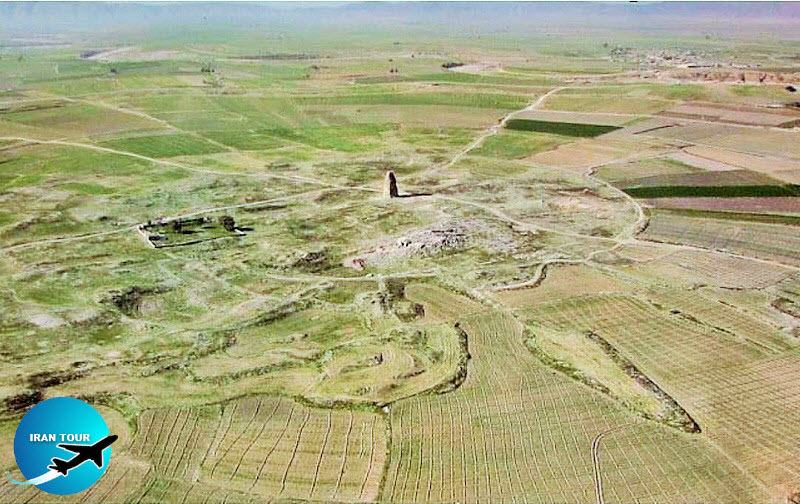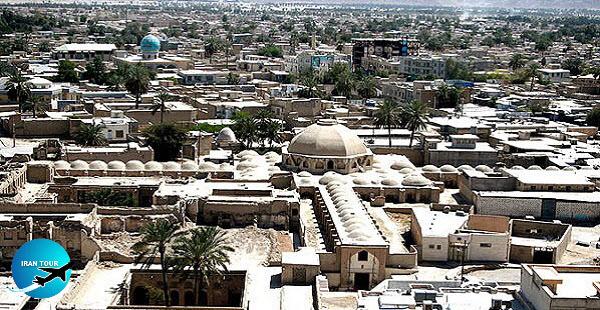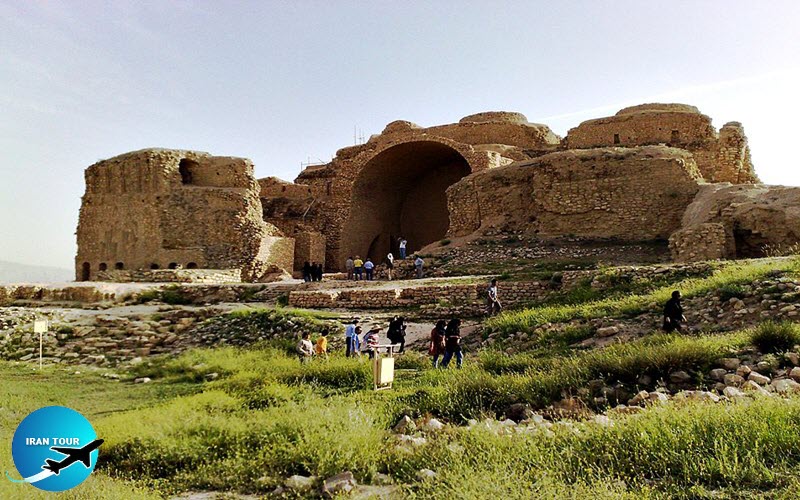Copyright 2020 - 2021 irantour.tours all right reserved
Designed by Behsazanhost
The southern part of Fars province
The southern part of Fars province
Leaving Shiraz for the south, the traveler sets out on an exciting, ever-changing trek. The road passes through a vast valley, which gradually leads to higher elevations, and after leaving behind a mountain range, enters the great, torrid plane of Larestan. This is bordered on the south by a row of high, isolated cliffs, which separate it from the coast of the Persian Gulf. The road between Shiraz and Lar, which leads farther on to Bandar Abbas, is the most modern (comparatively) of the historical roads of Fars. There is no record of its existence before the 15th century. However, all European travelers in the 17th century traveled along with it and described it in enthusiastic terms. When the road from Shiraz reaches Pol-e Fasa, it divides, and its branches go in two different directions. The traveler should take the branch that turns to the right. About 15 km from there, the road forks again. The left fork goes southeast, while the right goes due south.
The most important cities are:
 |
-Firuzabad
Firuzabad possesses some of the most splendid monuments from the early Sasanid period, founded by the head of the dynasty, Ardashir Babakan. The remains of ancient Firuzabad are situated at a distance of about 3 km from the modern town. They comprise the imposing Qale-ye Dokhtar (“the Maiden's Fortress”), Ardashir's Palace (also known as the Fire temple), and a turret that once marked the center of Ardashir's town. The historical monuments of Firuzabad are a great testimony to the shrewdness, power, and exquisite taste of the founder of the Sasanid dynasty. Visit these places in Firuzabad: The City of Gur- Ardashir Palace- The Maiden's Fortress- Sassanid Bridge- Bas-relief of Ardashir's Investiture- Bas-relief of Ardashir's Victory- Sassanid Roadway.
 |
| Mausoleum of Sheikh Shoayb Khonji |
-Khonj
Second, in importance to Lar, the central town of Larestan, is Khonj. It lies in a spacious valley in the foothills of the Zagros mountains, 1,044 m above sea level.
The earliest records of the town mention its name as Hong (“hideout"), perhaps commemorating the many Sufi ascetics who chose the place as their hermitage in the second half of the 12th century. The town may have existed during the Sasanid period. However, it did not rise to prominence before the Islamic age, when it was an important staging post on the road to the ancient port of Siraf, and monuments only from the Islamic period have survived there. Khonj became very important during the 12th-13th centuries. At that time, an astonishing number of Sufi monasteries were opened there, and the town became greatly famed as an important center of Sufism. When Sufis were shorn of their privileged status under the Safavid kings, Khonj lost its prestige, and gradually turned into a plain, provincial town. However, a number of Sufi mausoleums have survived there, lending special beauty to the place and making it worthy of the tourist's visit.
Visit these places in the Khonj:
Minaret of Sheikh Daniel- The mausoleum of Sheilh Najm Al Din- Sunnite Mosque- The mausoleum of Kaka Fakhr Al Din- The mausoleum of Sheikh Shoayb- The mausoleum of Qazi Hasan.
 |
| Qeysariyeh Bazar - Lar |
-Lar
Lar is the main city of Larestan, the largest region of Fars. With an area of about 27,000 sq. km, Larestan covers about 24% of the territory of the province. The region's terrain consists of parallel rows of mountains, which branch of the Zagros range and stretch in an east-west direction; the farther to the south one moves, the denser these rows become. The highest local elevation, in the east of the region, is Mt. Show, with an altitude of 2,681 m. The mountains separate vast and relatively flat valleys, which lie at an average altitude of 900 m above sea level.
The climate of Larestan is very hot and dry, with long, hot summers and short, warm winters. Still, it is more favorable than the very hot, humid climate of the coastal area, particularly during summer. Thus, many travelers of the past reported that they spent more time in Larestan while preferring to visit the ports just long enough to attend to their business affairs there. Most of the precipitation falls in winter, but sometimes the monsoon winds bring rain clouds to the area in summer. Water resources are in short supply. The only large river of Larestan is the Mehran - whose waters are salt! There are also a number of seasonal lakes, of which Lake Hirm, northwest of Evaz, is the largest. There are several permanent mineral springs, most of which are used for taking hydrogen sulfide baths. Flora is very scant, consisting mainly of date palms, acacias, tamarisks, and jujube trees. Shrubs of wild pistachio and mountain almond grow at higher elevations. Native wildlife is represented by goats, mouflons, foxes, wolves, jackals, kestrels, partridges, bee-eaters, hoopoes, and a large variety of reptiles. A rare mouflon of Larestan is protected in the Hormod Natural Protected Zone, located in the east of the region.
Larestan enjoys an extremely favorable strategic position between the inland regions and the ports of the Persian Gulf. Throughout its history, most of Larestan's residents have been engaged in trade and in the transport of goods. In the past, these people maintained close relations with Indian merchants, and many representatives of Lar companies existed in India. The famous coins of Lar freely circulated in parts of India from the 15th through the 17th centuries. These distinctive coins of pure silver were also found as far as eastern Africa and Southeast Asia.
The center of Larestan, Lar, is situated at some distance from Shiraz - about 360 km. Though very little is known about its pre-Islamic past, undoubtedly Lar was in existence long before the advent of Islam in the region. Local legend has it that the town was founded by Gorgin Milad, a storied hero of ancient Iran. It is said that the town was initially called Lad in his honor, and this name was later distorted to Lar.
 |
| The Palace of Ardashir |
Until the 16th century, Lar was the seat of a local king, who paid tribute to the Shah of Iran. At that time, the town had the title of Dar al-Aman (the "Secure Place"). However, with the ascension to the throne of Shah Abbas the Great, the situation in the region changed. Shah Abbas sent his troops, led by the famous general Allahverdi Khan, to expel the Portuguese from the Island of Hormoz, which they had captured in 1515. The ruler of Lar refused to cooperate, and this naturally infuriated the Safavid king. He gave the order to storm the town. After a successful siege, Lar fell, and its ruler was brought before Shah Abbas, who finally gave the order to kill the rebellious vassal in secret. Despite these sad events, the period of Shah Abbas's rule proved to be the glorious era of Larestan. Because Lar was located on the route to Bandar Abbas, the most important Iranian port of that time, it attained great repute and prominence.
After the Safavid period, the fortunes of Larestan drastically changed. The region was torn among Afghan invaders, Arab raiders, and local profiteers. The situation was aggravated even more when the area came under the control of Nasir Khan Lari, a self-appointed local governor, who refused to acknowledge the rule of Karim Khan Zand and continuously repulsed the attacks of the government troops sent there. Although the power of Nasir Khan over the region was eventually curtailed, the Zand ruler never succeeded in conquering the province. Relative peace was achieved only under Fathali Khan Gerashi, who ruled over Larestan for more than thirty years. After his governorship, however, things deteriorated once more. The people were oppressed by the Qavam family, who were angry at the locals' support of the rebels fighting against their troops during the Constitutional Revolution. A huge wave of Lar immigrants swept over the countries of the Persian Gulf. In 1960, a devastating earthquake ruined much of the city. A new town, with lighter buildings having iron frameworks, was created about 6 km south of the old town. The old town, however, was not abandoned, and after some reconstruction continues its bustling life. Visit these places in the Lar: Qeysariyeh Bazar- The Dragon's Fort- The mausoleum of Nader Shah's mother- Neshat Garden- The Ashkenan and the Ali Khan Complex.
- Details
- Category: Shiraz Tourism